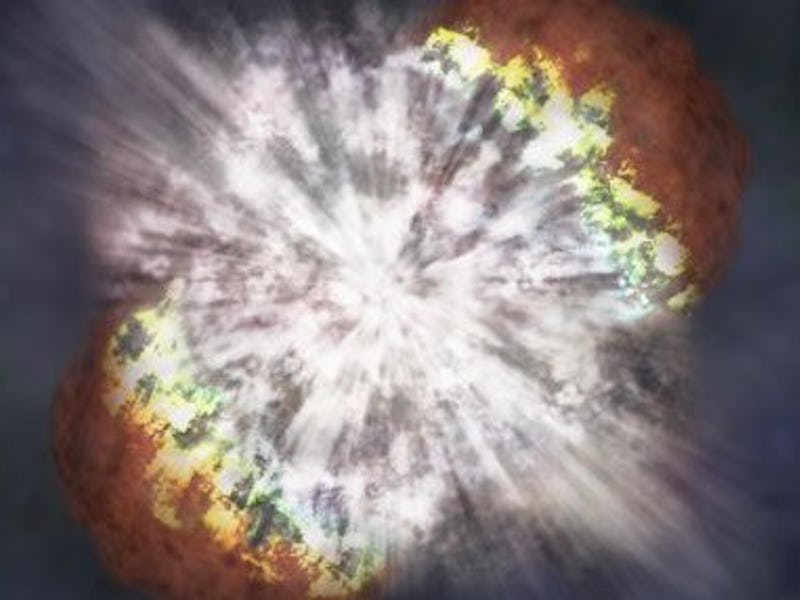Scientists unravel the mystery behind the brightest supernova ever
Supernova SN 2006gy broke all our records — a new study reveals the moments before the star exploded may have been key to its luminosity.

In September 2006, astronomers detected a massive explosion in a galaxy around 240 million light years away. Dubbed supernova SN 2006gy, the stellar explosion was 100 times more energetic than any other supernova, making it the brightest supernova ever recorded.
After years of pouring over data from the explosion, scientists may finally know why it managed to be so bright. In a new study, astronomers reveal that what happened in the moments before the star went fully supernova were critical to its record-breaking brightness.
The study, published Thursday in the journal Science, suggests that the exploding star may have interacted with the material of another star as it detonated, resulting in its super-luminosity. The findings are based on an unusual chemical signature — large amounts of iron emitted from the supernova a year after it exploded.
The study describes one possible scenario for what exactly has to happen to create an exceptionally energetic, exceptionally bright supernova. If confirmed, it could help explain how other bright supernovae form, bringing astronomers a step closer to understanding the chemistry behind these incredible cosmic events.
An unexpected origin
Anders Jerkstrand, a researcher at the Max Planck Institute for Astrophysics in Germany and lead author of the study, has been collecting clues on this stellar mystery for years.
“The origin of SN 2006gy and other very bright supernovae are not well understood, and this result points to a quite unexpected origin,” Jerkstrand tells Inverse.
Supernova SN 2006gy, caught on camera by astronomers from the University of Stockholm.
A year after it exploded, SN 2006gy produced an unusual emissions spectrum that perplexed astronomers. In the new study, Jerkstrand and his team unravel the mystery: They created different models of the supernova’s spectrum, revealing that the emissions indicated the presence of large amounts of iron.
To understand what produced this iron, they ran through a series of different simulations to hit upon the most likely origin — that it may have come from the material of another star.
In their proposed scenario, a white dwarf star spiraled into the circumstellar envelope around another star. A circumstellar envelope is a disk of matter that orbits a star and is made up of the same material that the star formed from. When the stars collided, the envelope would have been ejected out. If the white dwarf exploded as it reached the center of the other star, the resulting supernova would have slammed straight into the envelope.
“Because the mass of the envelope is much bigger than the mass of the supernova, it’s like hitting a brick wall,” Jerkstrand says. “A large part of the kinetic energy of the supernova is converted to light.”
Other very bright supernovae may have also occurred as a result of the same process, the study suggests.
The curious case of SN 2006gy
When it was first discovered, the supernova created quite a buzz. It gradually brightened over the course of 70 days, and at its peak was shinning 10 times brighter than its host galaxy. At the time, scientists speculated that it may have been a result of a massive star 150 times larger than our Sun being extinguished in the early universe.
Optical (left) and X-ray (right) images of SN 2006gy at the time it was first observed..
"Of all exploding stars ever observed, this was the king," astronomer Alex Filippenko said in a statement at the time. "We were astonished to see how bright it got, and how long it lasted."
Supernova typically take place when a star nears the end of its lifecycle and runs out of fuel. When that happens, the star essentially collapses in on itself as a result of its own gravity.
But because it was so bright, this supernova defied prevailing theories of how these stellar explosions form, leading scientists to believe that it must have been triggered by something else.
This new study provides just one possible theory for what caused SN 2006gy. To confirm it, astronomers have to observe similar types of supernova at different evolutionary phases and using different wavelengths first, Jerkstrand says.